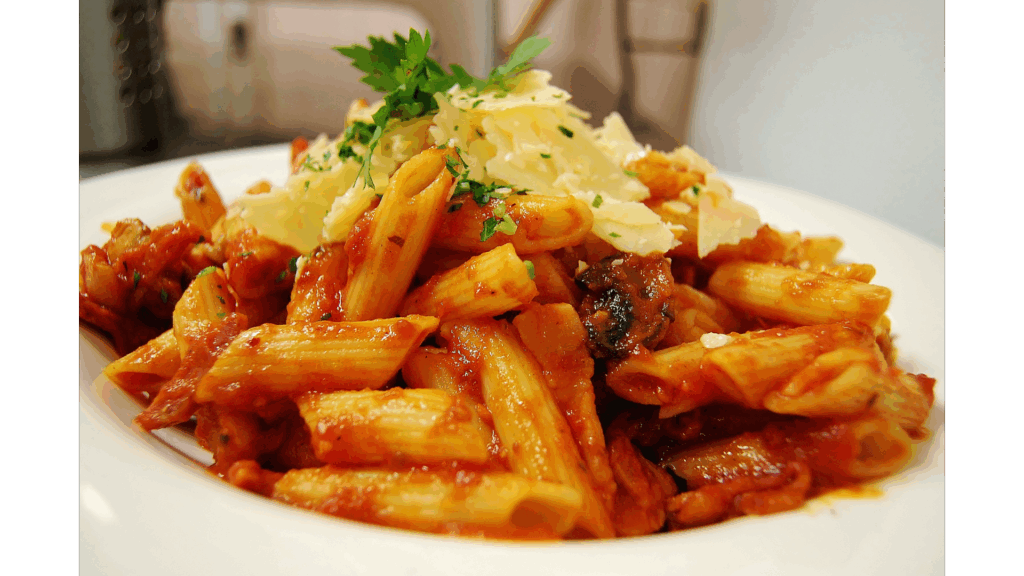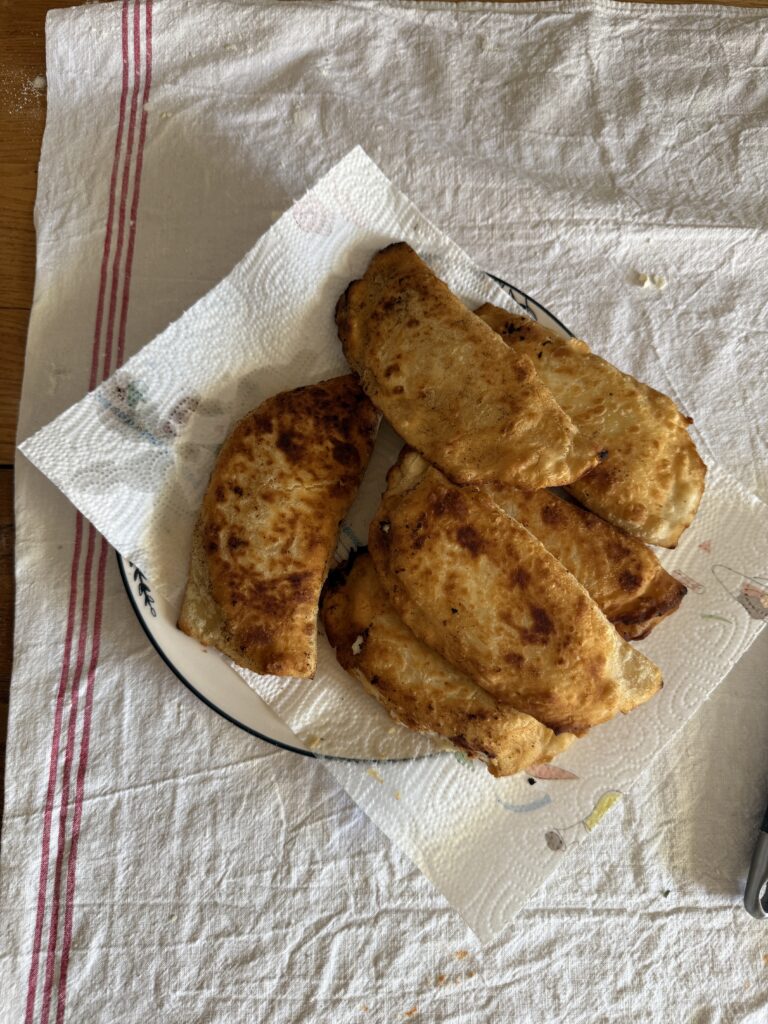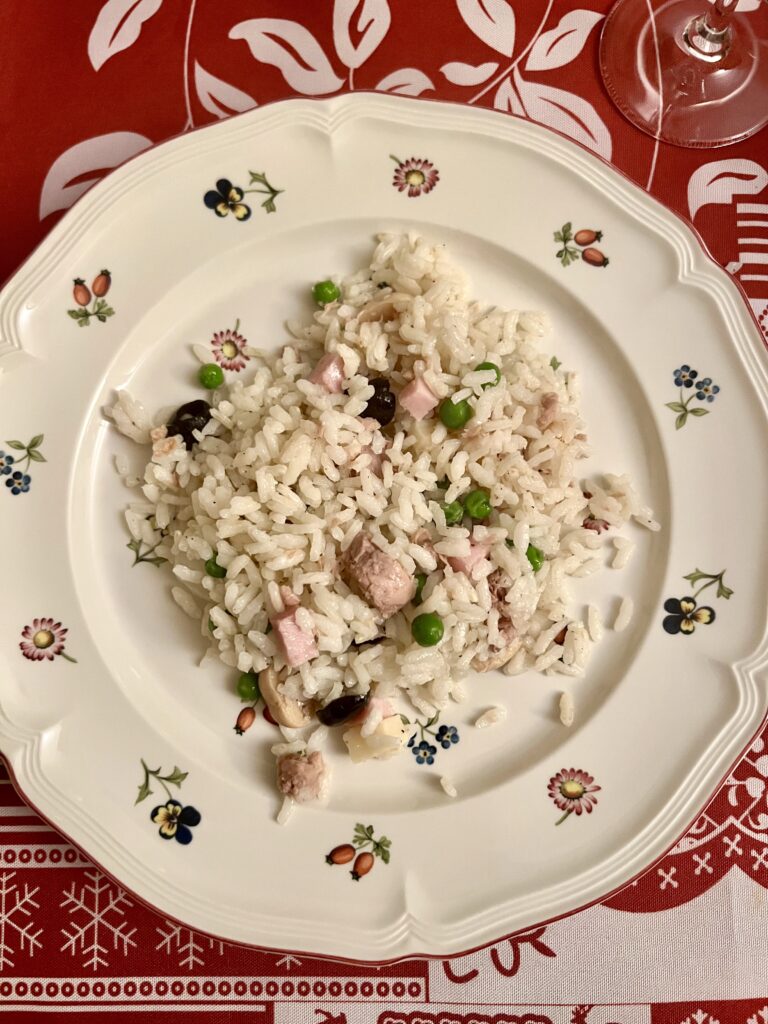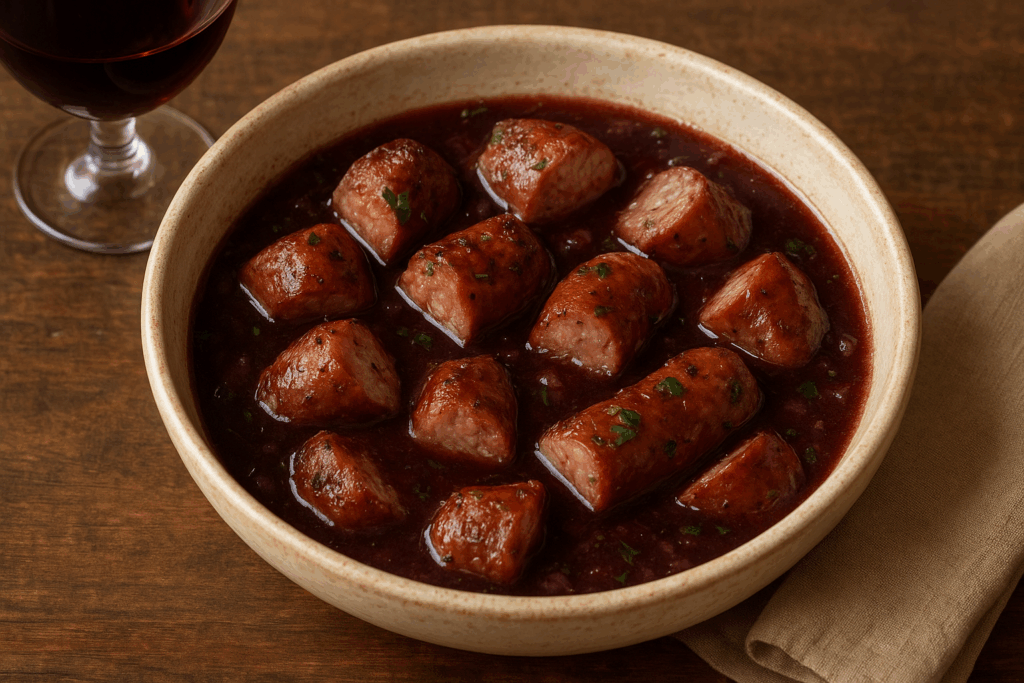Michele Pascarella runs the London pizzeria Napoli on the Road. His pizza is award-winning — in fact, it’s been crowned the best in Europe by the 50 Top Pizza awards for 2025, and in 2023 he was named ‘World Pizza Maker’. With a name like Napoli on the Road, can you take a guess as to what kind of pizza style this is? Neopolitean, of course!
One of his pizzerias is just around the corner from the Pasta Grannies office, so we popped in to meet him and chat about all things dough, toppings, and the perfect crust. He shared some of his secrets (not all of them, of course), including a few recommendations for making the perfect slice. From choosing the right pizza cutter to avoiding the dreaded soggy bottom, here are the highlights from our conversation.

About Michele
Vicky: Hi Michele! Thanks for having us in to your restaurant. Tell us, what inspired you to start pizza making…
Michele: I started when I was 11, out of necessity. During summer break, when school was out, we’d go learn something. I worked in a pizzeria, starting in the kitchen and eventually moving into the business side. Over time, I slowly got better.
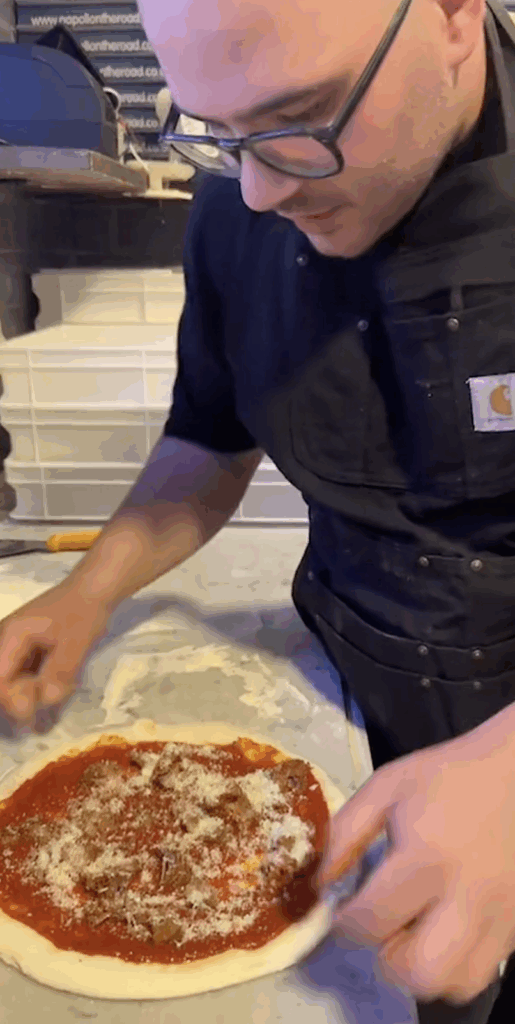
Vicky: Now you’re running your own business in multiple locations. A true example of learning young and perfecting a skill. So, a silly question — but always debated online: pineapple on pizza. Yes or no?
Michele: Never pineapple on pizza. Why would you put bread with pineapple? If you cook or grill it — maybe as chutney or part of an experimental tasting menu — okay. But most people just open a tin of pineapple. No thanks.
Vicky: It’s a very American or British read of a pizza I think. Talking of which, what made you leave Italy and why England?
Michele: I wanted to learn English. I thought I’d go to the UK, then America. But I stayed — it’s been 15 years. I worked in a central London restaurant, saw people eating pizza but not really understanding it. I wanted to show them real pizza.
Vicky: Was there a mistake that led to your success? Where did the name come from?
Michele: Yes — the food truck! I had the idea to start a pizza food truck to show people how it’s done. It was a little three-wheeler — an epic little car. I drove around London, to farmers’ markets and outside offices. In 2019, I made my first pizza in Chiswick.
Vicky: So the people of Chiswick have had you for seven years!
Michele: Yes! I was living in North London and told my mum about this place I found in Chiswick. I moved, and the first location I saw was empty — I felt like I had to protect it. Then it all took off. Soon we’ll open our central London location.
Vicky: And your pizza is clearly amazing. But how did you get crowned the winner of the Top 50 Pizza awards?
Michele: It’s a team effort, really. We still are so honoured to be featured, It’s not just me. We’re 45 people working hard. We try to get better every day. That’s the secret. Keep improving. We’re opening a new central location because we’ve had thousands of requests. We always said we’d stop at two… but here we are!
Vicky: Are you usually fully booked?
Michele: Yes, we’re usually fully booked, but we always keep four or five tables open for walk-ins. We’re open Monday to Sunday. Since the award, it’s been even busier.
Vicky: And is your wheat Italian? Or does it come from Britain?
Michele: Our molino — that’s what we call it in Italy — is from Italy. It’s called Denti, near Parma. We do a kind of pre-ferment called biga. It’s a fermented starter dough we use like a natural yeast. You take the biga and incorporate it into the main dough. It’s a two- or three-step process, left to ferment for 16 to 18 hours. Biga is a little different because you can use it from 18 up to 48 hours. Our main pizza dough ferments for 36 hours.
Vicky: And do you use the same flours in your biga as in your main dough?
Michele: Yes, we keep it consistent.
Award-winning flavour combinations
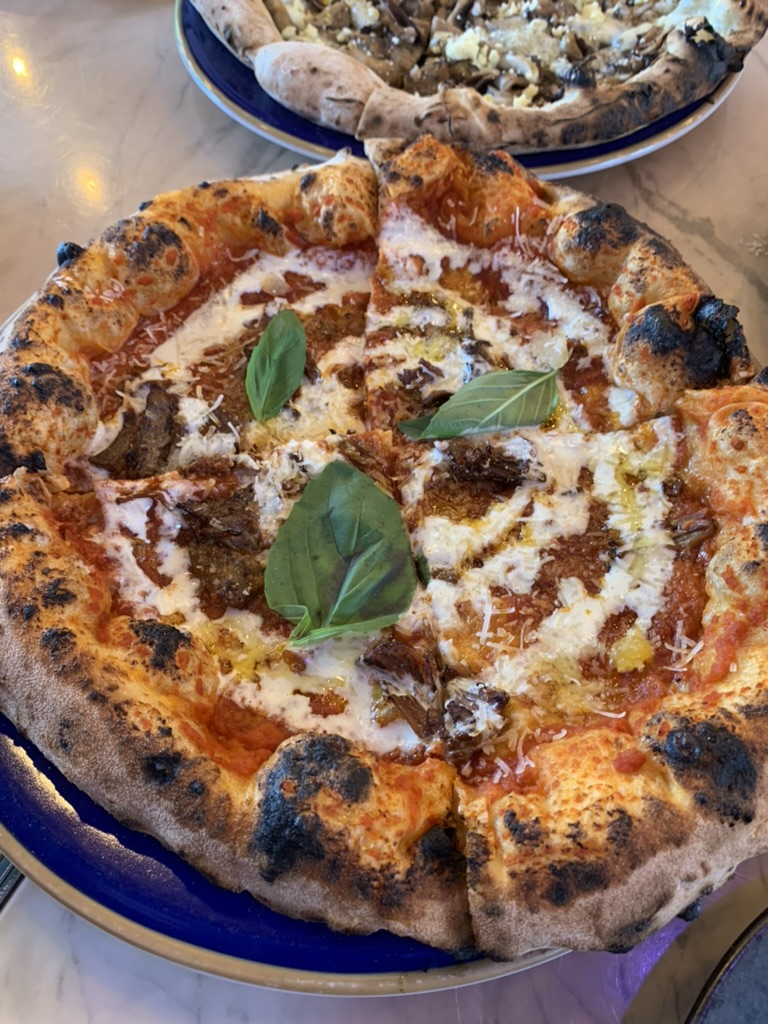
Vicky: Today we’re tasting a pizza called Ricordi d’Infanzia — it translates to “Childhood Memories” — made with your nonna’s slow-cooked beef ragu, a thick Neapolitan base, and aged Parmigiano. It’s a wonderful, unusual pizza. The crust is so fluffy, it doesn’t go soggy!
Michele: That’s the key — the dough is strong enough to hold the toppings without becoming wet or messy.
Vicky: And your signature pizza involves an amazing ragu. We know from our nonnas that every recipe is unique and there’s always some specific ritual or ingredient that comes with it. Can you tell us about your ragu. Any tips?
Michele: We slow-cook the meat separately and then add it later. The meat becomes very soft and so then when cooked in tomato sauce, it gives the sauce a rich flavour from the onions, carrots, sausages — and it’s all cooked slowly together.
Vicky: So something our nonnas often say is that ragu needs to be cooked for a really long time. How long do you cook your ragu?
Michele: At least eight hours.
Vicky: Wow! And if I didn’t have eight hours, what kind of pizza would you recommend? Something like a margarita?
Michele: Actually, one of my favourite simple pizzas is the marinara. People think it’s just oregano and garlic — but we build more depth. We use a tomato base, sweet cherry tomatoes cooked down with olives and peppers. When it comes out of the oven, instead of garlic, we add fresh garlic leaf, made into a kind of pastry crisp. We add anchovies from Cetara — the best from Marmatora — and a smoked tomato jam.
Vicky: Do you source all your ingredients from Italy?
Michele: Yes, three times a week. Our customers love that.
Michele’s top pizza tips
Vicky: Right, so pizza! First things first: the dough. What’s the essential ingredient for a decent pizza dough?
Michele: It’s very, very simple. We need water, flour, fresh yeast, and salt. Our dough hydration is around 70 to 75%. We use three kinds of flour: type 0, type 1, and a bread wheat flour. It’s very nutrient-dense and full of flavour.

Vicky: Tell us about shaping the pizza to get that perfect crust…
Michele: The dough is very soft, so you need to be very gentle. We always start stretching from the sides, then the middle, and try to push all the air toward the crust. That way, the edge rises and becomes light and fluffy. Stretch gently. That’s what gives you that nice puff and means the air is at the edge, not in the middle.
Vicky: What makes a great ingredient for pizza?
Michele: Simplicity. In Italy, we have lots of natural, fresh ingredients. But the UK has great produce too — especially at farmers’ markets. For example, a slow-cooked summer tomato for a ragu brings out deep, rich flavours.
Vicky: That’s a long time. Now, for those making pizza at home, any advice?
Michele: Home ovens aren’t like restaurant ovens, so accept that it’ll be different. Keep ingredients simple. Preheat your oven for at least 30 to 40 minutes. Start cooking the pizza on the bottom shelf where it’s hottest, then move it up for the last 2–3 minutes to brown the top.
Vicky: Any other tips?
Michele: A drizzle of good extra virgin olive oil. And use scissors to cut your pizza.
Vicky: Scissors! Why?

Michele: So you don’t damage the structure of your crust. Plus, you can look inside and see how well it’s cooked easily.
Vicky: What kind of flour do you recommend?
Michele: I look for flour with 12–13.5% protein. The higher the protein, the stronger the flour — and the longer the fermentation needed.
Vicky: Any final tips or secrets for us? I know, one last question — how do you avoid a soggy bottom? On a pizza, that is!
Michele: Be careful with wet ingredients. Too much tomato will soak the dough. And remember, cheese melts, which adds more liquid. Balance wet and dry ingredients and add some of them later in the cooking process if you can.
Vicky: Great advice! Well, I can’t wait to go home and try out some of these tips for myself. Byt before then, I think we’ll all be taking some home with us today. Thank you so much for chatting to us, it’s been a pleasure!
Michele’s pizzeria’s can be found at . You can follow him and the team on instagram @napoli_ontheroad. And to try more of the creations at home, you can purchase the book here.
